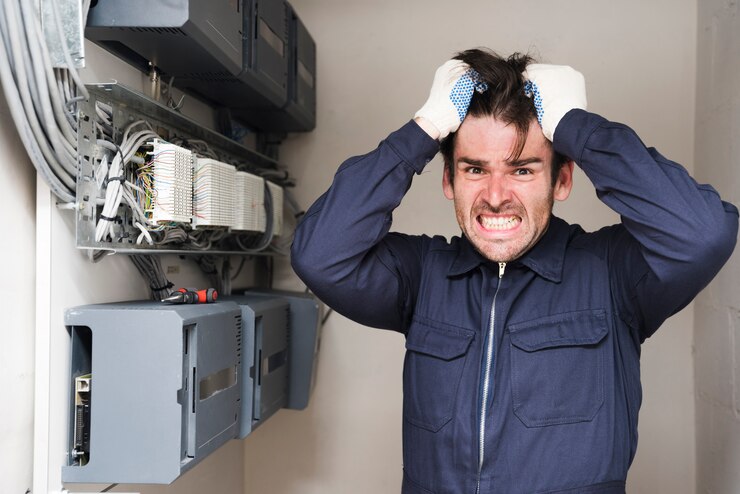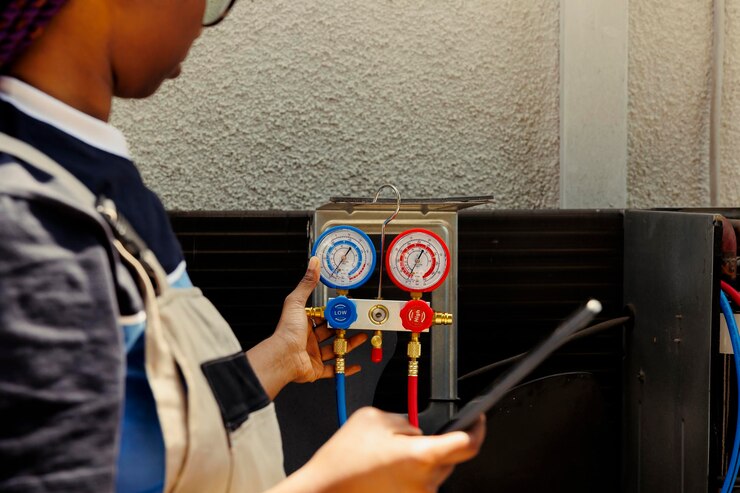
When your furnace starts acting up in Orange, California, it’s essential to troubleshoot potential issues before seeking professional help. Start by checking the thermostat settings and replacing batteries if needed. Inspect the air filter for dirt or clogs, as a clean filter promotes efficient airflow. By following these simple steps, you may be able to diagnose and resolve common furnace problems, keeping your home warm and comfortable during the colder months.
Heating and Air Conditioning Services
Tips for Diagnosing Furnace Problems
As the temperatures drop in Orange, California, it’s essential to ensure that your furnace is in proper working condition. However, if you’re experiencing issues with your furnace, you may not always need to call in the professionals right away. With some DIY furnace troubleshooting techniques, you can potentially save time and money by diagnosing and fixing common furnace problems yourself. Tradewind Heating and Air specializes in furnace repair and maintenance services in Orange, providing expert assistance and solutions to keep your furnace running smoothly throughout the colder months.
Step-by-step Guide to DIY Furnace Repairs
Repairing a furnace yourself can save money, but it’s essential to prioritize safety and know your limitations. Here’s a step-by-step guide to DIY furnace repairs, assuming basic knowledge of HVAC systems:
Check the Thermostat
When encountering furnace issues, it’s essential to begin troubleshooting by inspecting the thermostat. Ensure that it’s set to heat mode and that the temperature setting is higher than the current room temperature. If the thermostat settings appear correct but the furnace remains inactive, it’s advisable to check the batteries and clean the contacts.
Sometimes, depleted batteries or dirty contacts can hinder the thermostat’s functionality, preventing it from effectively signaling the furnace to start. By addressing these potential issues with the thermostat, you can potentially resolve minor furnace problems and restore proper heating functionality to your home.
Inspect the Air Filter
Another crucial step in troubleshooting furnace issues is inspecting the air filter. A dirty or clogged air filter can significantly restrict airflow, causing the furnace to operate inefficiently and potentially leading to malfunctions. To address this issue, it’s important to check the condition of the air filter regularly and replace it if it’s dirty or clogged.
By ensuring proper airflow through a clean filter, you can alleviate strain on the furnace and potentially resolve common issues such as inadequate heating or uneven temperature distribution throughout your home.

Check the Circuit Breaker
If your furnace fails to turn on altogether, it’s prudent to inspect the circuit breaker. A tripped circuit breaker could be the culprit behind the malfunction. To address this issue, locate the circuit breaker panel in your home and check if the breaker connected to the furnace has tripped. If so, reset the breaker by flipping it to the “off” position and then back to the “on” position.
After resetting the breaker, attempt to turn on the furnace again to see if the problem is resolved. This simple troubleshooting step may rectify the issue and restore your furnace’s functionality without the need for further intervention.
Inspect the Pilot Light
For gas furnaces, it’s essential to inspect the pilot light if you encounter operational issues. Start by checking if the pilot light is lit. If it’s out, refer to the manufacturer’s instructions to relight it safely. However, if the pilot light won’t stay lit after relighting attempts, it could indicate a more serious issue that warrants professional attention.
Issues such as a malfunctioning thermocouple or gas valve may require specialized expertise to diagnose and resolve. In such cases, it’s advisable to contact a qualified HVAC technician to assess and address the problem effectively, ensuring the safe and efficient operation of your gas furnace.
Listen for Unusual Sounds
If you notice unusual sounds emanating from your furnace, such as banging, rattling, or squealing, it may signify a mechanical issue that requires immediate attention. To address this concern, it’s crucial to turn off the furnace immediately to prevent potential damage or safety hazards. After powering off the furnace, refrain from attempting any further troubleshooting measures and instead contact a professional HVAC technician for a thorough inspection and diagnosis.
Strange noises from the furnace can indicate various problems, such as loose components, worn-out parts, or issues with the blower motor. Attempting to diagnose or fix these issues without proper expertise could exacerbate the problem or pose safety risks. By seeking assistance from a qualified technician, you can ensure that the underlying cause of the noise is identified accurately and addressed effectively, restoring your furnace’s functionality and safety.
DIY Tips to Troubleshoot Furnace Issues at Tradewind HVAC
By following these DIY tips to troubleshoot furnace issues in Orange, California, you can potentially identify and resolve common problems without the need for professional assistance. However, if you’re unsure about how to proceed or if the issue is more complex, don’t hesitate to contact Tradewind Heating and Air for expert HVAC services in Orange. Our team of professionals is here to help you with all your heating and cooling needs.

FAQs
- What should I check first if my furnace is not working?
- Start by checking the thermostat settings to ensure it’s set to heat mode and the temperature is higher than the room temperature. Also, check the thermostat’s batteries and clean the contacts if necessary.
- Why is it important to inspect the air filter in the furnace?
- A dirty or clogged air filter can restrict airflow, causing the furnace to operate inefficiently. Regularly inspecting and replacing the air filter can help maintain proper airflow and prevent potential malfunctions.
- What should I do if the circuit breaker connected to the furnace has tripped?
- If the circuit breaker has tripped, reset it by flipping it to the “off” position and then back to the “on” position. Attempt to turn on the furnace again to see if the problem is resolved.
- How do I safely relight the pilot light on a gas furnace?
- Refer to the manufacturer’s instructions for your specific furnace model to safely relight the pilot light. If the pilot light won’t stay lit after relighting attempts, contact a qualified HVAC technician for further assistance.
- What are some common mechanical issues indicated by unusual sounds from the furnace?
- Unusual sounds such as banging, rattling, or squealing can indicate mechanical issues such as loose components, worn-out parts, or problems with the blower motor.
- Why is it important to turn off the furnace if unusual sounds are heard?
- Turning off the furnace immediately when unusual sounds are heard can prevent potential damage or safety hazards. Attempting further troubleshooting without proper expertise could exacerbate the problem or pose safety risks.
- What should I do if I’m unsure about how to proceed with DIY furnace troubleshooting?
- If you’re unsure about how to proceed or if the issue is complex, it’s best to contact a professional HVAC technician for assistance. They can provide expert diagnosis and repair services to ensure the safe and efficient operation of your furnace.
- How often should I inspect and replace the air filter in my furnace?
- It’s recommended to inspect the air filter monthly and replace it every 1-3 months, depending on factors such as filter type and household conditions.
- Can I troubleshoot and repair gas furnace issues on my own?
- While some minor issues can be addressed through DIY troubleshooting, it’s essential to prioritize safety and know your limitations. For complex or potentially hazardous issues, it’s best to contact a qualified HVAC technician for professional assistance.
- What are the benefits of DIY furnace troubleshooting?
- DIY furnace troubleshooting can save time and money by identifying and resolving common problems without the need for professional assistance. It also allows homeowners to maintain their furnace and address minor issues promptly, preventing larger problems down the line.
